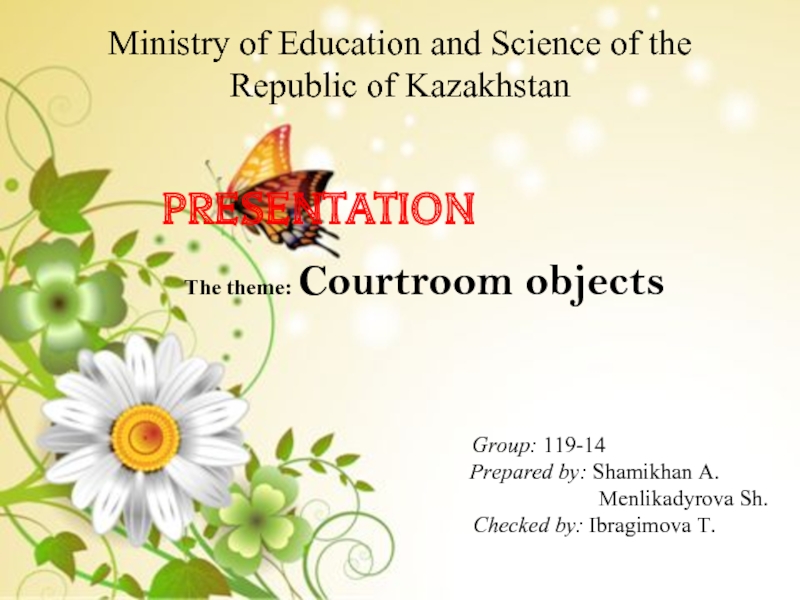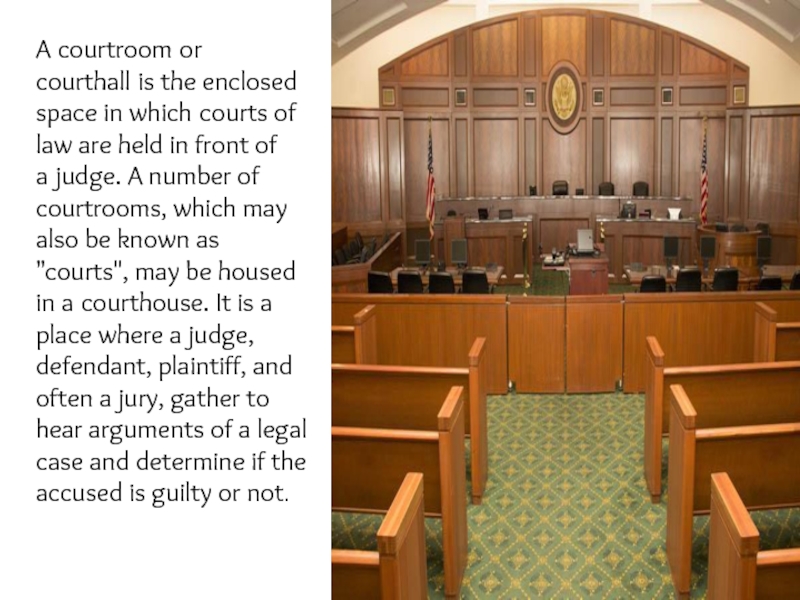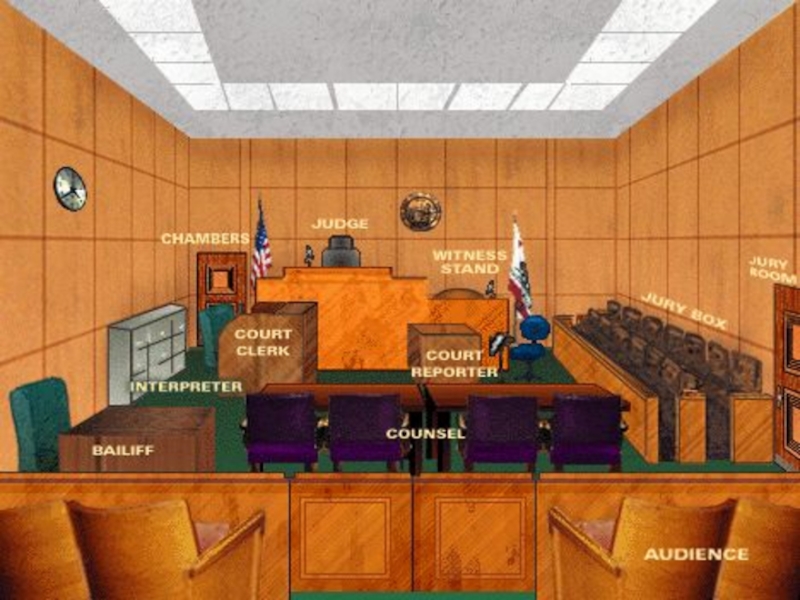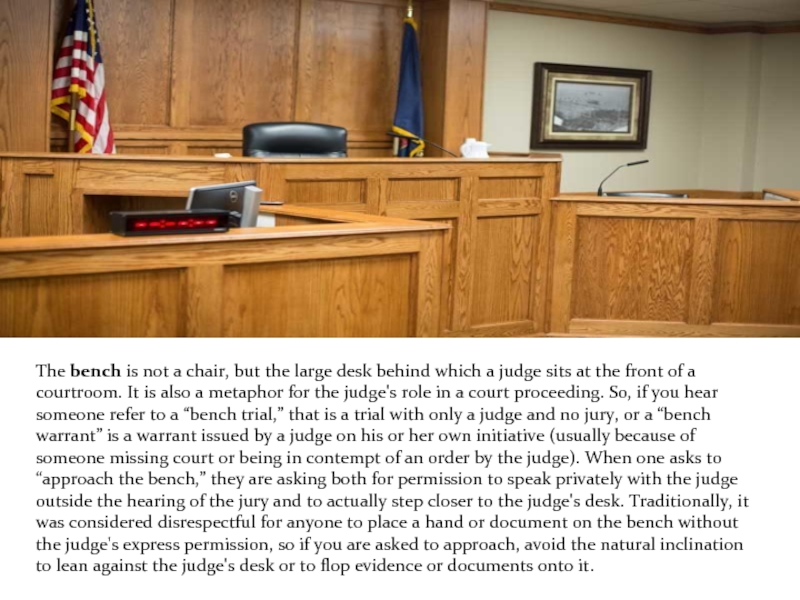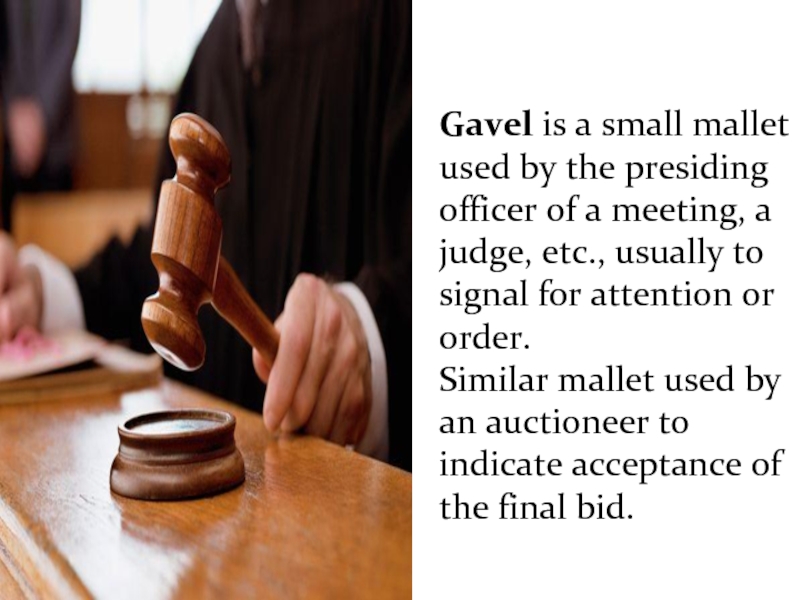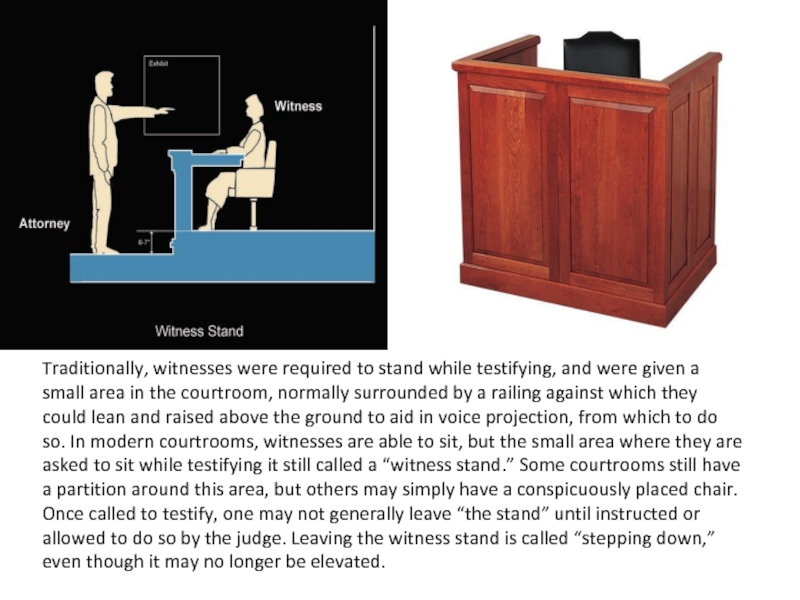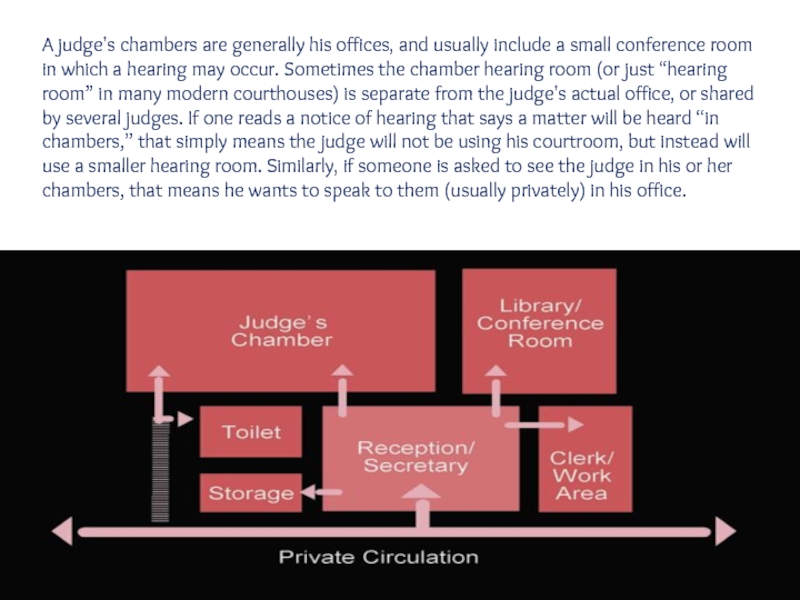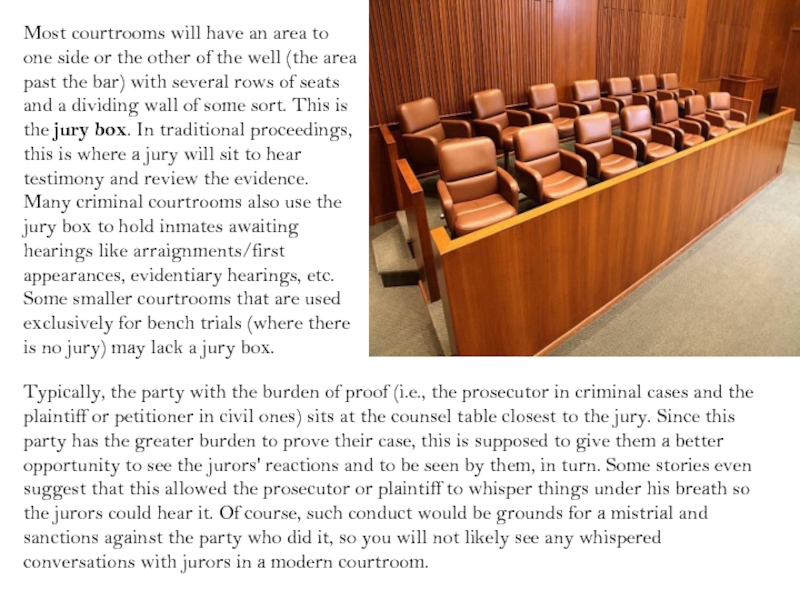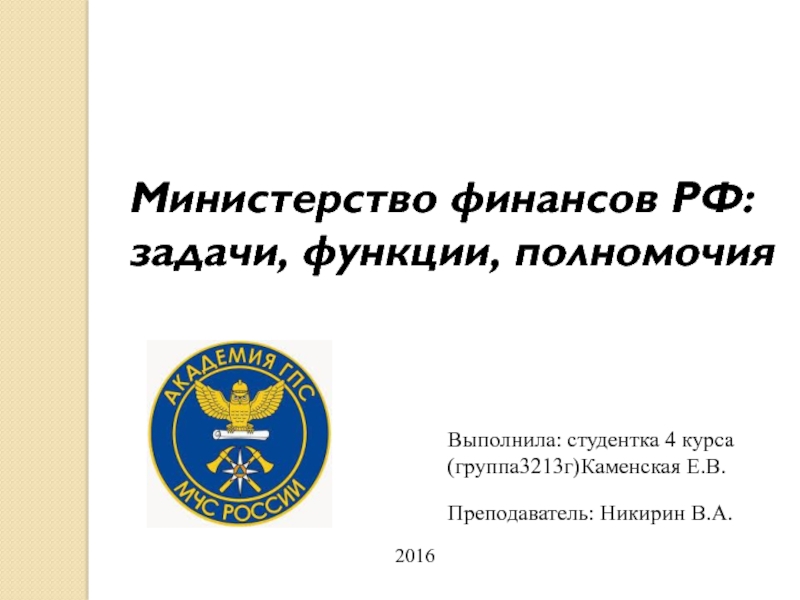- Главная
- Разное
- Дизайн
- Бизнес и предпринимательство
- Аналитика
- Образование
- Развлечения
- Красота и здоровье
- Финансы
- Государство
- Путешествия
- Спорт
- Недвижимость
- Армия
- Графика
- Культурология
- Еда и кулинария
- Лингвистика
- Английский язык
- Астрономия
- Алгебра
- Биология
- География
- Детские презентации
- Информатика
- История
- Литература
- Маркетинг
- Математика
- Медицина
- Менеджмент
- Музыка
- МХК
- Немецкий язык
- ОБЖ
- Обществознание
- Окружающий мир
- Педагогика
- Русский язык
- Технология
- Физика
- Философия
- Химия
- Шаблоны, картинки для презентаций
- Экология
- Экономика
- Юриспруденция
Courtroom objects презентация
Содержание
Слайд 1
Ministry of Education and Science of the Republic of Kazakhstan
The theme: Courtroom objects
Group: 119-14
Prepared by: Shamikhan A.
Menlikadyrova Sh.
Checked by: Ibragimova T.
Слайд 2A courtroom or
courthall is the enclosed space in which courts of law are held in
Слайд 4The bench is not a chair, but the large desk behind
Слайд 5Gavel is a small mallet used by the presiding officer of
Similar mallet used by an auctioneer to indicate acceptance of the final bid.
Слайд 6
Traditionally, witnesses were required to stand while testifying, and were given
Слайд 7A judge's chambers are generally his offices, and usually include a
Слайд 8Most courtrooms will have an area to one side or the
Typically, the party with the burden of proof (i.e., the prosecutor in criminal cases and the plaintiff or petitioner in civil ones) sits at the counsel table closest to the jury. Since this party has the greater burden to prove their case, this is supposed to give them a better opportunity to see the jurors' reactions and to be seen by them, in turn. Some stories even suggest that this allowed the prosecutor or plaintiff to whisper things under his breath so the jurors could hear it. Of course, such conduct would be grounds for a mistrial and sanctions against the party who did it, so you will not likely see any whispered conversations with jurors in a modern courtroom.
